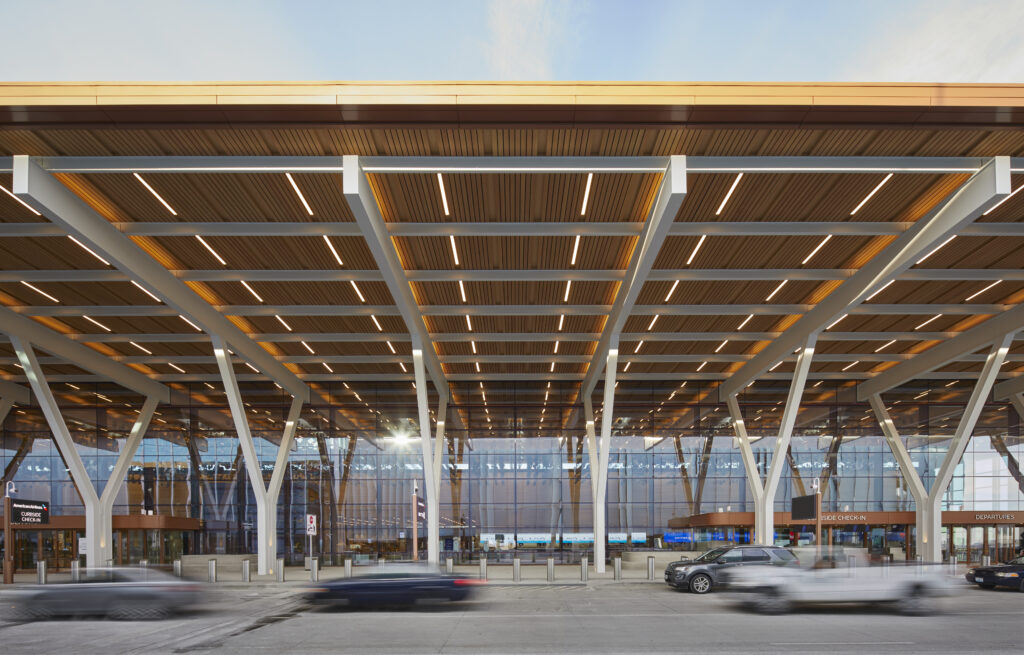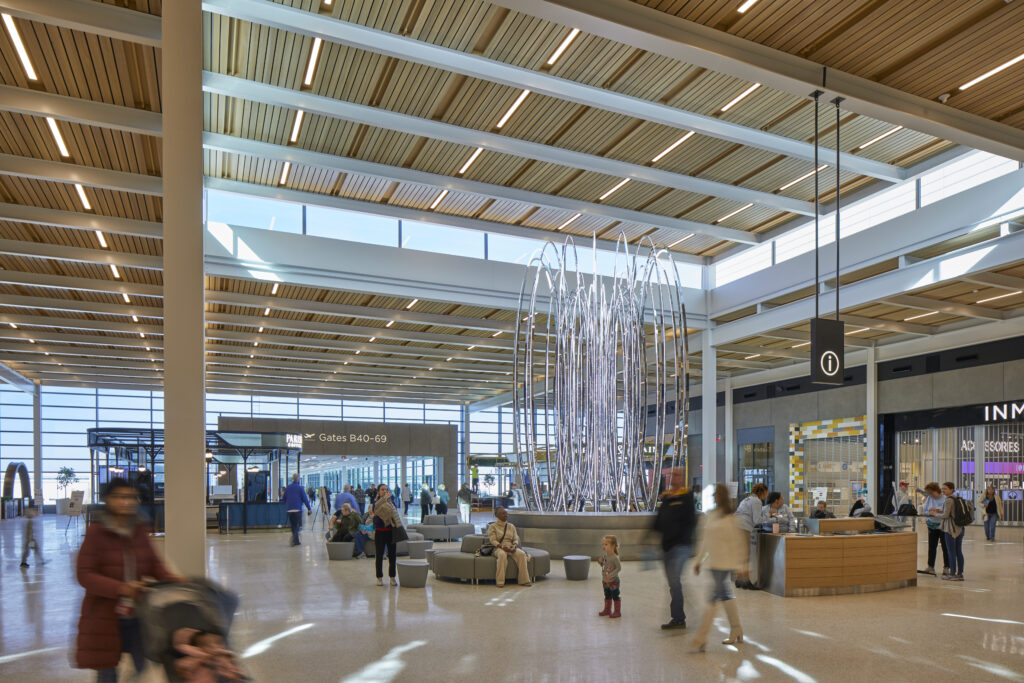Passenger Terminal Today speaks with James Dietz, aviation practice director at Henderson Engineers, about the key technological infrastructure behind Kansas City International Airport’s new LEED v4 Gold-certified terminal.
On February 28, 2023, Kansas City International Airport (MCI) in Missouri opened its new 102,200m2 terminal, marking the end of the four-year Build KCI project to increase the airport’s annual capacity from 3.8 million passengers to more than 16 million. A key enabler of the project was US building systems design firm Henderson Engineers, which created the plans for the US$1.5bn terminal’s technological infrastructure. The firm’s challenge was to replace the three existing terminals, which opened in 1972, with one sustainable building.
Henderson’s full scope of services for the new terminal at MCI included acoustics, audio-video, electrical, fire alarm, mechanical, plumbing and technology as well as fire alarm commissioning. The 100% employee-owned company’s technological infrastructure has enabled features like touchless kiosks, public address systems and visual paging boards for passengers who are deaf or hard of hearing. The infrastructure also supports a biometric verification system that enables travelers to use their faces as boarding passes during check-in and boarding for international flights. The company’s contribution was also key to enabling a strong wi-fi system, ADAS system, security protocols, cameras and access control across the board. Alongside this, it included several large-format, digital signage areas, such as a large display across the ticket hall that the airport can operate flexibly, with whatever media types, presentations or messaging it chooses. The building’s 39-gate layout has been designed to provide flexibility to add another 11 gates in the future.
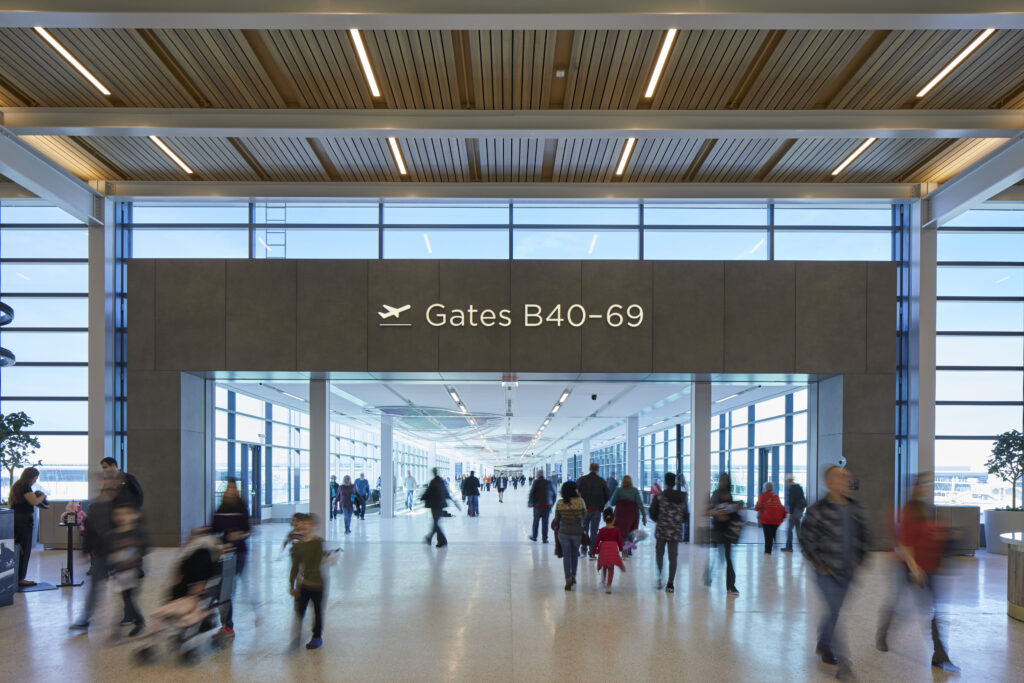
James Dietz, aviation practice director at Henderson Engineers, says, “Virtually every design that is going into this project has an eye toward the future. We’re making sure it’s innovative now but can easily be updated as technology evolves and in case the requirements surrounding airline travel are updated. This flexibility will help keep MCI at the forefront of travel for decades to come. Because we knew this facility will be in use for at least the next five decades, we were focused on its long-term success and viability. As aviation continues to adopt sustainable design practices, going all-electric futureproofs the project from taking on considerable upgrades down the road. It’s good for the planet and good for the wallet. We also included things like low-flow fixtures; we watched our water usage and made sure to reuse materials on-site locally. Indeed, a lot of the concrete was reused from the demolition of one of the old terminals and the apron area. We made sure that 85% of all construction waste was diverted.”
All-electric, all the time
The LEED v4 Gold BD+C: NC-certified terminal/concourse currently runs on an all-electric power system for airport operations, designed by Henderson Engineers. The system powers new terminal operations and replaced the previous terminal format at MCI. Compared with a traditional mixed-fuel system that uses natural gas, oil or coal, the all-electric system is expected to have reduced operational CO2 emissions by 92% by 2050. Dietz continues, “On top of enabling this sustainable energy, the all-electric system also helped us simplify the infrastructure for the project. With a single source of utility power, we found that we could better coordinate reliability and redundancy, which meant airport systems could remain operational for longer and maximize uptime.”
The company extended this all-electric approach to airline and passenger services with current air carriers. The engineering team provided the necessary specification and infrastructure for electric ground service equipment (eGSE) chargers. High-speed electric chargers are now installed throughout the facility to power airline eGSE, which services aircraft in various ways, including transporting luggage and serving aircraft. Dietz comments, “Besides keeping up with the industry as it moves toward electric ground service equipment, this also eliminates emissions from the traditional natural gas or diesel-type crowd service vehicles. Removing that from the airport environment paves the way to cleaner air quality around the airport, although we still have to deal with the jet fumes from the airplanes.”
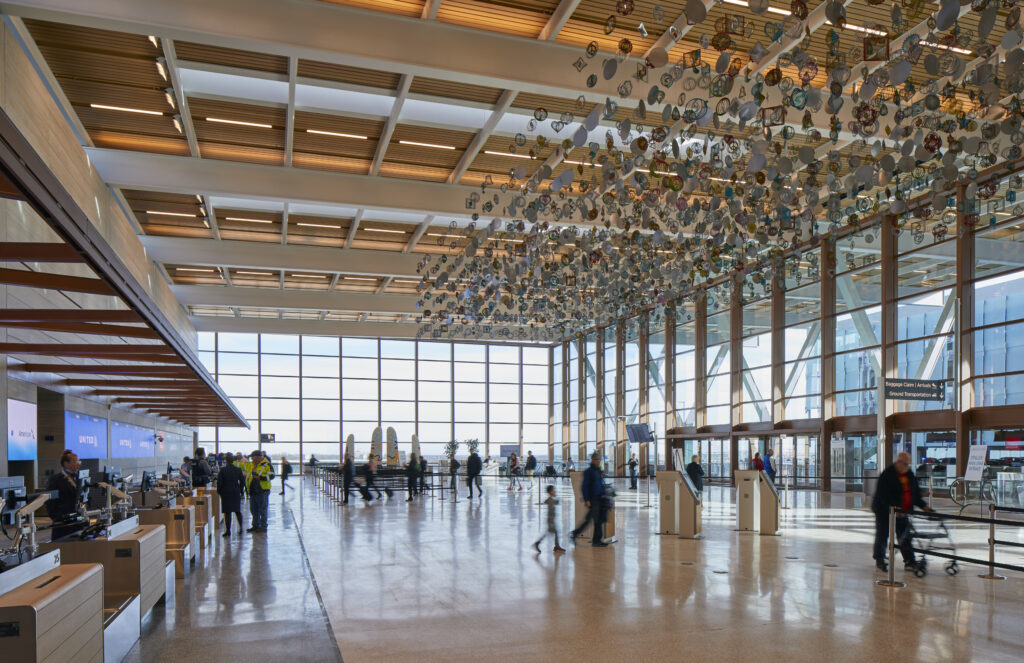
Recapture and renew
The Henderson team worked with the airport authority, airport, city and local utility companies to ensure that MCI was supplied with 100%-renewable power from wind farms and photovoltaic (PV) panels. This approach not only improved the airport’s air quality and energy efficiency but also enabled the recovery and reuse of renewable energy. For example, the firm was able to sustainably generate chilled water to cool the facility and hot water to provide heating. Typically, chiller plants eject heat via cooling towers in the cooling process, but Henderson’s design includes a heat recovery chiller. Instead of ejecting heat into the atmosphere via the facility’s rooftop cooling towers, the electric chiller plant recycles that energy within the facility and uses it to maintain comfortable indoor temperatures. The system works with an on-site all-electric boiler plant, a sustainable heating alternative to a gas-fired furnace, powered by 100%-renewable energy from Evergy.
Henderson’s heating, ventilation and air conditioning (HVAC) system, which circulates fresh air while releasing exhaust and building relief air from the building, also included energy recovery technology to ensure that the building reclaims heat (energy) from exhaust and relief air, before ejecting it into the atmosphere. The captured energy is then reused within the building’s HVAC system. “Our focus was to maximize any energy that’s created within the building to its fullest potential so we could help limit MCI’s carbon footprint,” explains Dietz. “The building systems we designed show that you can deliver a world-class facility without compromising sustainability. Our firm’s vision is to build a better world. We champion sustainable design practices as part of our MEP 2040 commitment as we believe our industry can – and should be – working to make a difference.”
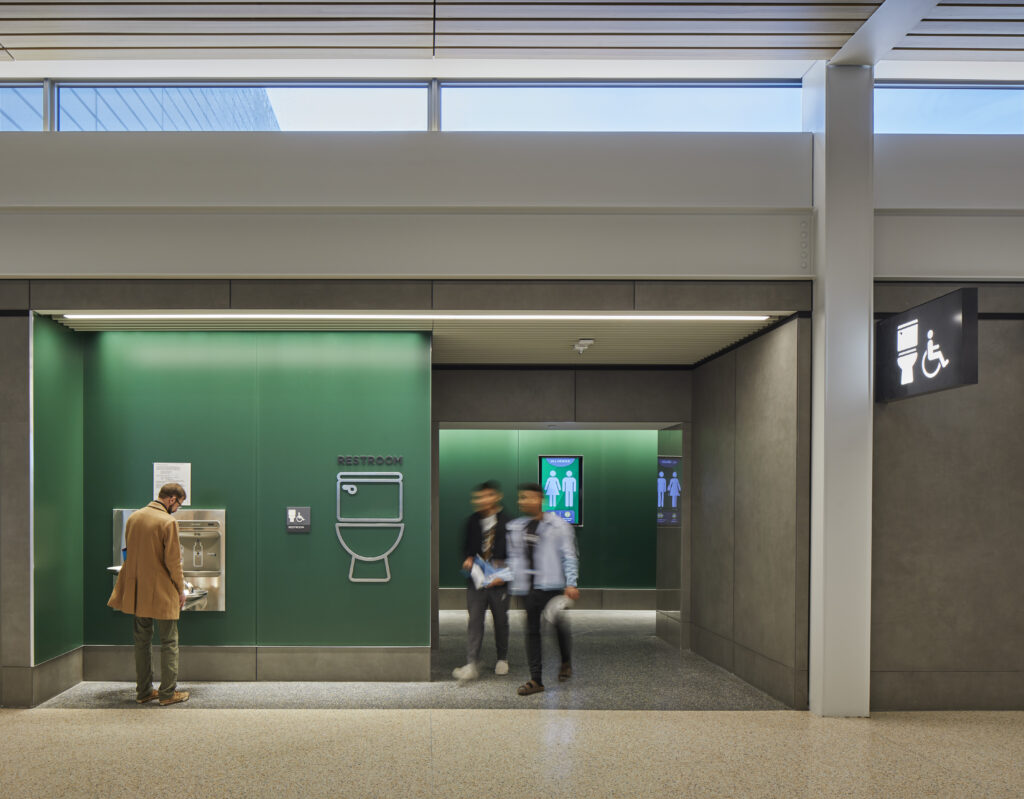
Pedal to the metal
Beyond this, Henderson designed the power infrastructure to support 70 electric vehicle charging stations in the airport’s 6,000-space parking garage. Dietz says, “The layout of parking areas is a fine art. You have to make sure they are readily accessible so that people want to use them and can find them. You need to ensure that the flow through the garage itself works well too. We had to coordinate with the electrical systems and capacity teams to make sure we gave them the appropriate link-up so that they have the right power source in the right areas. Interestingly, the electric charging stations ended up being the more prominent locations, meaning they’re the closest to the stairwells and elevators. This design gives people a location that they want to use and encourages them to invest in electric charging.” The team’s custom-designed electrical infrastructure within the parking garage provided the flexibility required for the integration of a 510-panel solar array, designed and provided by Good Energy Solutions.
This sustainable approach to passenger vehicles also included an induction charging system for electric bus services, the first of its kind at a municipal international airport. Much like wireless phone charging, MCI’s fleet of electric buses park above inductive charging pads to power up while picking up travelers. Dietz elaborates, “The electric bus charging system was the first of its kind in the area. Inductive charging allows buses to maximize uptime. This is because, every time they stop for passenger pickup, they get a little bit of charge. They don’t have to come out of service to sit and be charged for long hours. This system can also help eliminate the emissions, improve local air quality and contribute to the airport’s carbon reduction targets.”
However, there was one area that Henderson’s electric attitude could not reach. “At the time we designed it, the food and beverage concessionaires weren’t necessarily on board with an electric solution, so the concessions area was the one area that we allowed gas.” Looking to the future, though, Henderson still sees potential for its plans for an all-electric airport. “Concessionaires are starting to get a little more familiarity and comfort level with going with all-electric cooking solutions, so that is an aspect in the future that could definitely electrify and eliminate gas in cooking facilities completely. Until we get to electric planes, that’s the only part of the airport that remains to be electrified.”
